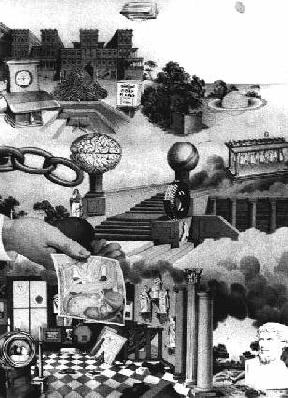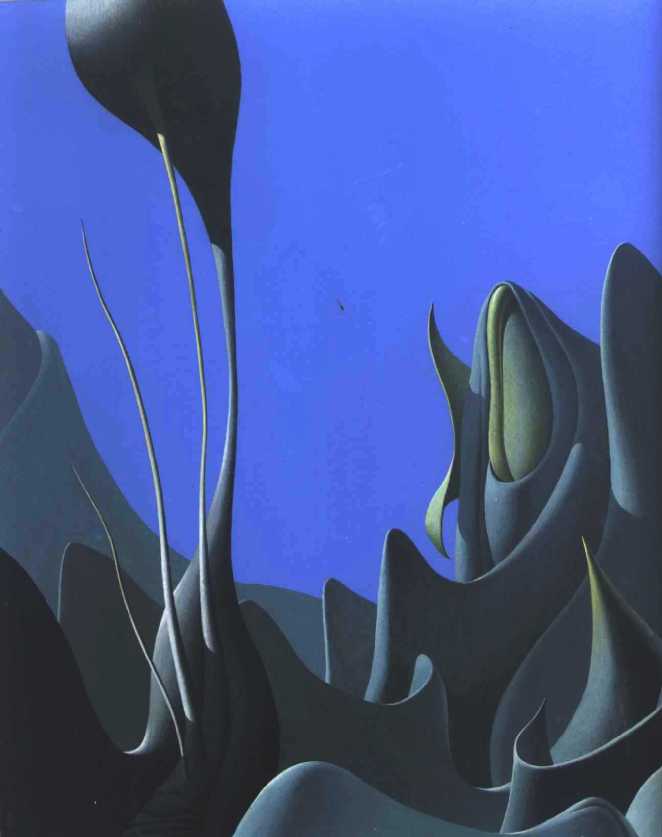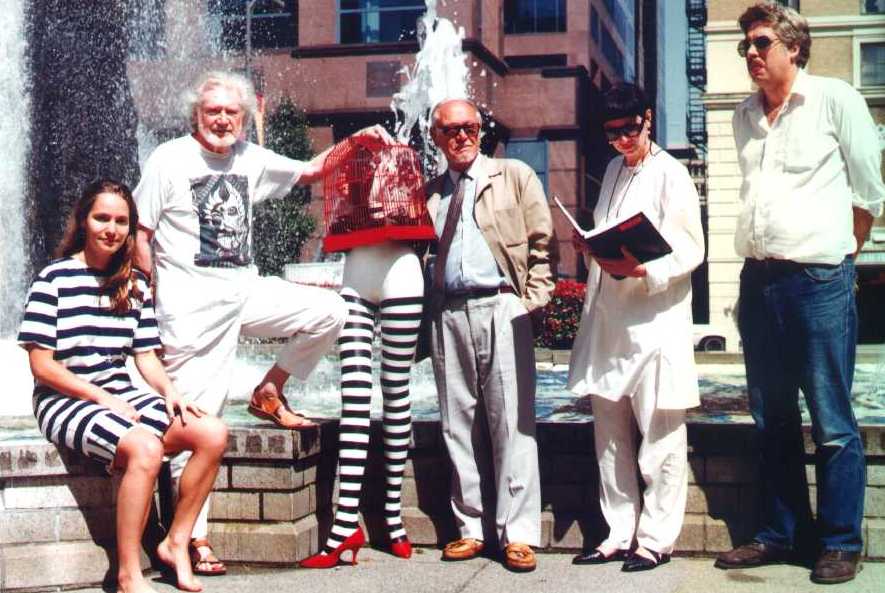 |
 |
 |
 |
 |
 |
 |
 |
| Home | Galleries | Exhibitions | About | Archives | Links | Contact |
What was spawned was a hybrid
culture
in which various spores grew voraciously while others disappeared,
European merged with Asian
and
with
a sort of North American culture which was itself a hybrid. In
general, older first
generation immigrants
tend to cling to their own
culture and values, younger first generation
and second generation tend
to modify
their own traditions with what they perceive to be mainstream
values,
and many second and most
third
generation
accept the mainstream indigenous hybrid culture as their own.
The same is true of artists. In
their
effort to think globally and act locally, most artists deal with the
same
global concerns and issues
but they
express
their deliberations in the local idiom that they are most familiar
with.
Surrealism is a term that
was first used to
designate the work of a
number of diverse European visual artists and
poets
who, between World War I and II, stressed a positive and subjective
approach
tothe arts in opposition to the cynical anti-art stance of Dadaism. It
claimed
as its pregenitors, artists as different as Hieronymous Bosch, Breugel,
Goya, Olidon Redon,
Georgio De Chirico and Marc Chagall. It emphasized
methodical personal research and experimentation to open the door
to the subconscious and
to imbue the everyday world of phenomenological experience with the
phantasmagorical
creations of dream and fantasy.
On the other hand, the minutely defined and realistically depicted irrational and paradoxical worlds of Magritte, Dali and Delvaux evoke a sense of the inexplicable, yet immediately apprehensible, interweaving of the conscious and subconscious. Some of the surrealists invented specific techniques, particularly Ernst and Man Ray, to unlock psychic revelations and most of the surrealists were interested in the psychic arts, such as palmistry, hypnotism, and alchemy as doors to the subconscious.
With its emphasis on
content,
psychic investigation, the relationship between the spiritual and the
subconscious, freedom of
expression, gesture,
and the primacy of the imagination, surrealism set the agenda for most
of the visual art of the
twentieth century and
introduced an incredibly rich vein
of ideas and sources which are still
being profitably mined by contemporary'artists.
It seems a bit strange
that
as a culture we honour musicians who play the work of composers with
fidelity
but we expect our visual
artists to
produce
work that is so new and innovative that it hides its debts to the past.
A visual artist whose work acknowledges its relationship to past
masters
or
influences is somehow suspect, visual artists, it seems, are supposed to spring fully
formed
out of the void.
Our cultural obsession with the
new
seems to be the most powerful force driving the visual arts. Often this
obsession takes the form of honouring
an artist's use of new technology
and materials, and a refusal to comment on the emotional or psychic
content
of the work as if "newness" itself
was sufficient. Large backlit
transparencies,
digital slide projections,
computer controlled
video, computer and chemically manipulated photos and
film, and piles
of
industrial waste all somehow qualify as art because they have never
before
been used as art, not because of the significance of
their content.
All of these are funded and
exhibited
by our public institutions as if they were the greatest thing since
diced
tomatoes. Often the actual content
of these new media is totally banal
and innocuous, perhaps reflecting the banality of our culture, and the compositional
elements,
if any, are
surreptitiously drawn from a casual perusal of art
history.
At the same time, artists who use more traditional media such as
painting,
drawing,
sculpture, etc. and who place more emphasis on content and
definition,
are marginalized by these same public institutions. It is as if we want
to
eat up and spit out our past
before we
have had time to digest it.
Surrealism provides a specific case in point. Surrealism draws on one of the most pervasive constants in all art-imagination. It uses dreams, disassociated psychological states( the precursors were Rimbaud and Jarry), and exploration of both the individual and the cultural (Ernst, Picasso, Lam and Paalen) subconscious to jump start the imagination and follow it down the crooked road of self discovery.
Surrealism runs through all of
art
history-and there are surreal aspects in almost every artist's work-if
the viewer is able to read
the road signs.
Surrealism
coalesced into an "ism" in the nineteen twenties and its legacy can be
seen in the work of artists
as diverse as
Normal Rockwell,
Walt Disney, Jackson Pollock, and Robert
Rauschenberg.
In Vancouver, a number of artists have been intersted in the surrealist
legacy for the
past thirty years. They have met together, talked about
their work, explored their diverse influences, developed mastery of
their
technical processes,
and showed their work together.
They have learned how to open the doors to their imaginations so that
the
creatures and events inside were able to
spill out and people the
visible
universe.
In many cases, the influences
of
these artists and their relationships are illustrated within their
work,
which has evolved from a
dialogue with their
own cultural and artistic history and out of their own individual
psychic
being. The past is
necessarily an
important
part of the road that got them to the present. (The famed critic and
writer
Harold Rosenberg once stated: Dead art movements are the normal
life
of art; all that can be expected
of them is good painting. In regard to
creation there is nothing to indicate that a new art movement has any
advantage
over
an obsolete one; the contrary
may well be the case).
Some of these artists came from
other
countries, mainly in Europe and the ideas and approaches that they
accumulated
in their toolbox as they
travelled, have stayed with them and provided
part of their psychic continuum. Others in this group were born in Vancouver, or,
elsewhere
in North America, and have lived here for all or most of their lives
but
they too, in this global milieu with access to the whole depth of
history
and breadth
of culture, have collected ideas and influences and working methods
picked
up from elsewhere and elsewhen.
In some sense the
movement
of ideas and people over the surface of the earth has paralled the
movement
of the surface of the earth
itself, the
continental plates separating themselves from the primordial landmass
and
drifting across vast oceans, picking up pieces of a geosyncline here,
an
ancient seabed there, and grinding out a hybrid identity as a continent
or archpeligo.
In Vancouver, we stand on
the
cutting edge where the North American plate meets the Pacific plate,
where
incredible but hidden stresses have
forced up mountains, where fissure
spew out gouts of molten rock from beneath the crust, and where morphed and transformed
detritus picked
up on the journey has created a surface environment
totally
a result of the hidden
influences
which underlie it.
 |
 |
 |
 |
 |
 |
 |
 |